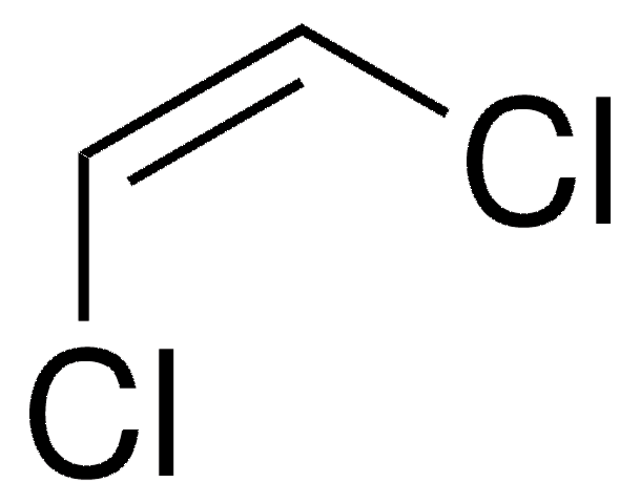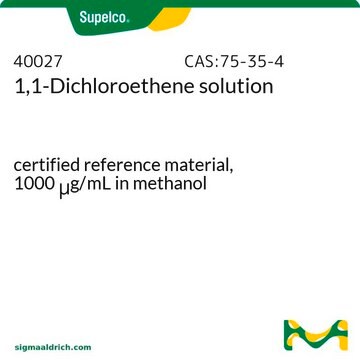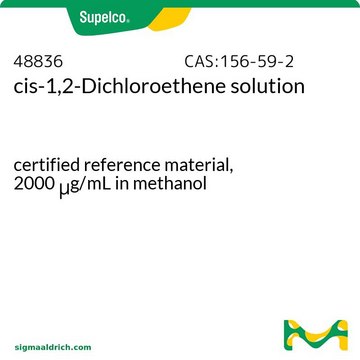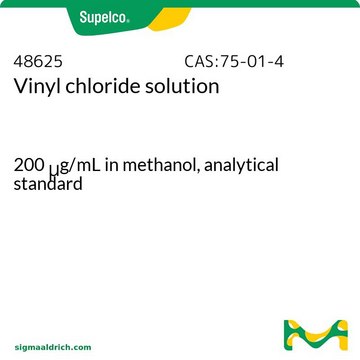163023
1,1-Dichloroethylene
contains 200 ppm MEHQ as inhibitor, 99%
Synonym(s):
Vinylidene chloride
About This Item
Recommended Products
vapor density
3.46 (vs air)
vapor pressure
9.68 psi ( 20 °C)
Assay
99%
form
liquid
autoignition temp.
968 °F
contains
200 ppm MEHQ as inhibitor
expl. lim.
15.5 %
bp
30-32 °C (lit.)
mp
−122 °C (lit.)
density
1.213 g/mL at 20 °C (lit.)
storage temp.
2-8°C
SMILES string
ClC(Cl)=C
InChI
1S/C2H2Cl2/c1-2(3)4/h1H2
InChI key
LGXVIGDEPROXKC-UHFFFAOYSA-N
Looking for similar products? Visit Product Comparison Guide
Application
Signal Word
Danger
Hazard Statements
Precautionary Statements
Hazard Classifications
Acute Tox. 3 Oral - Acute Tox. 4 Inhalation - Carc. 2 - Eye Irrit. 2 - Flam. Liq. 1 - Skin Irrit. 2
Storage Class Code
3 - Flammable liquids
WGK
WGK 3
Flash Point(F)
-2.2 °F
Flash Point(C)
-19 °C
Personal Protective Equipment
Regulatory Listings
Regulatory Listings are mainly provided for chemical products. Only limited information can be provided here for non-chemical products. No entry means none of the components are listed. It is the user’s obligation to ensure the safe and legal use of the product.
PRTR
Class I Designated Chemical Substances
FSL
Group 4: Flammable liquids
Special flammables
Hazardous rank I
ISHL Indicated Name
Substances Subject to be Indicated Names
ISHL Notified Names
Substances Subject to be Notified Names
JAN Code
163023-100G:
163023-100ML:4548173954448
163023-BULK:
163023-500ML:4548173954455
163023-4X1L:
163023-500G:
163023-25ML:
163023-199.8KG-P1:
163023-226.8KG-P1:
163023-2.5L:
163023-1L:
163023-VAR:
Choose from one of the most recent versions:
Already Own This Product?
Find documentation for the products that you have recently purchased in the Document Library.
Customers Also Viewed
Our team of scientists has experience in all areas of research including Life Science, Material Science, Chemical Synthesis, Chromatography, Analytical and many others.
Contact Technical Service












